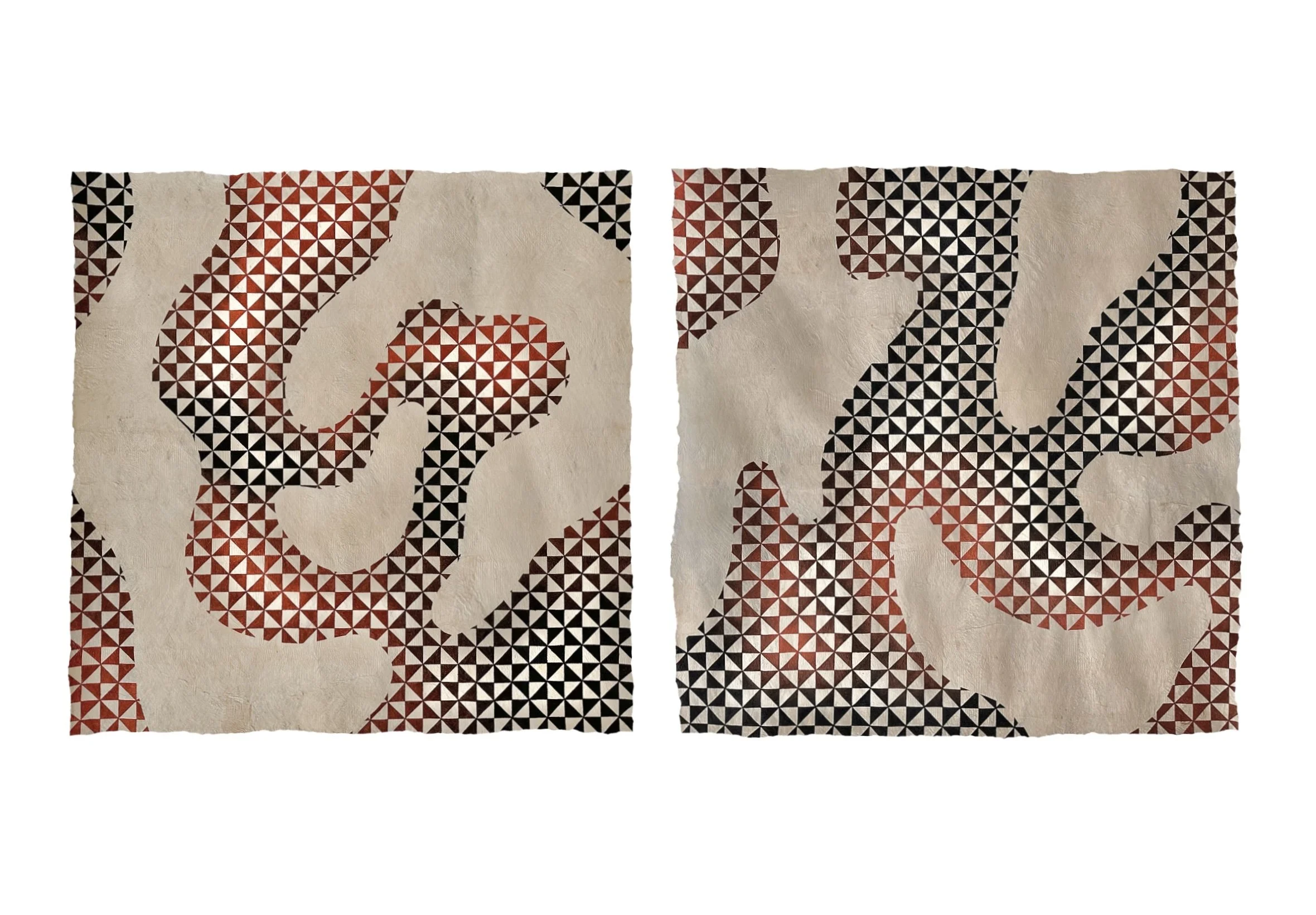



Nunu Fine Art is pleased to announce Ripples Are Waves, the first solo exhibition of Native Hawaiian artist Lehuauakea in Taipei. The exhibition features textiles known as kapa, created through traditional Native Hawaiian methods, made between 2021 and 2024. Through this body of work, the artist aims to preserve a rich cultural tradition while expanding the medium with their vision of an Indigenous future.
Kapa is a barkcloth made from wauke, or paper mulberry—a small flowering tree that originated in Taiwan and traveled across the Pacific Ocean in Polynesian canoes with Austronesian ancestors before ultimately landing in the Hawaiian Islands. The pathways of these Austronesian migrations can be traced today by studying the DNA of paper mulberry plants found in different parts of the Pacific.
The migratory history of the wauke tree brings into focus the unexpected connection between Lehuauakea’s works and Taiwan. Using the wauke as a point of departure, the artist’s kapa works not only carry forward the traditional Hawaiian craft, but also subtly connect the cultural lineages of Taiwan and Hawai‘i, tracing the tree’s origin in Taiwan to its journey across the ocean with Austronesian ancestors. Through kapa, Lehuauakea transforms personal artistic practice into a contemporary extension of cultural memory.
During the kapa making process, the bark is stripped from the tree and separated. The coarse outer layer is discarded, leaving the soft inner bark fibers to be soaked, fermented, pounded, spread out, and left to dry. Once dry, the fiber can be either handpainted or printed with handcarved bamboo stamps using natural dyes, the raw materials for which Lehuauakea gathers from their surrounding environment.
Kapa was the native Hawaiians’ primary source of cloth. It was used to make loincloths, skirts, and capes, as well as blankets, burial coverings, headcoverings, bandages, and more. The fiber was a foundational element of Native Hawaiians’ everyday lives, as well as their spiritual and emotional ones. However, when Hawaiʻi’s historical monarchy was deposed and the islands were annexed by the United States in the 1890s, kapa making and other cultural and religious practices were nearly eradicated. Interest in traditional practices was revived in the 1960s and 1970s during the Hawaiian Renaissance, and while significant knowledge had been lost in the intervening years, native Hawaiians were able to reconstruct kapa making techniques, inspired by similar processes in places like Tonga, Samoa, and Fiji. Lehuauakea was taught by kapa maker Wesley Sen, who is credited as helping to revive the process alongside other Native Hawaiʻi practices.
In works such as When Our Currents Flow Together, Malumalu Akua (Protection of the Gods) and Ka ʻUhane (The Spirit), Lehuauakea depicts patterns that are both geometric and organically inspired. Some patterns mirror traditional designs while others were created by the artist in an expansion of conventional aesthetics. A crucial element of Lehuauakea’s modernization of this ancient practice is the substantial scale on which the artist relies; although the size of the gallery limits the dimensions of the works on view, enlarging kapa pieces and adding embroidery are critical aspects of translating kapa into the realm of contemporary art for the artist. Through this experimentation, Lehuauakea broadens the medium’s historical limits, exploring themes of intersectional Indigenous identities, environmental stewardship, and the teachings of traditional mythologies and cosmologies.
Ripples Are Waves offers a personal and cultural perspective on Indigenous life in the modern context, while reflecting on how the medium connects Indigenous peoples and individuals across the Pacific. Rooted in tradition and continuing the spirit of the Hawaiian Renaissance, Lehuauakea contributes to the ongoing reawakening of Native Hawaiian culture and offers new possibilities for the generations to come.
